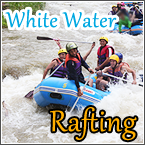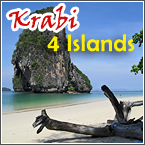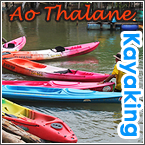Krabi Fossilized Shell Cemetery
July 26, 2010 by admin
Filed under Attractions
Recently, Krabi has seen millions of visitors enjoying the tranquil beaches and natural wonders of the island that is evident in the achievements and environment of the people making it a top tourist destination. With several beaches and surrounding islands to explore, Krabi is a diverse and fascinating place, rich in culture, dining, shopping, nightlife, and sporting activities. Among the many places to visit in Krabi is Ban Laem Pho especially if you are interested in geological history. Ban Laem Pho was once a large freshwater swamp and home to a particular breed of snail dating back to the Tertiary Age approximately 40 million years ago when they lived and died by the million, forming layers upon layers whereby the living existed. Slowly but surely, changes in the weather precipitated the swamps’ disappearance leaving behind layers of fossilized snail shells of forty centimeters thick resting on ten centimeters of the subsoil lignite.
The Shelly limestone is now distributed in large broken sheets of impressive magnitude on the seashore at LaemPho due the huge geographical changes. The World Mollusk Fossil Site, the shell cemetery is the one place in the world where the mollusk is very well preserved and is in fact known to be the only place left on earth estimated to be 40 million years old. The site of the cemetery is at the cape of Ban Leam Pho in the Muang District and is a flat platform of exposed fossil along the shore lines. The platform are actually layers of shell that have built up over years, depositing one over the other with the separations between the layers telling a story of the prevailing weather during that era. Thicknesses of the fossil bed vary from1 – 2 meters with most of the fossils under the water line of the shallow bay. The fossils are clearly identified as being made up of three principal species of Gastropods (a type of spineless soft bodied creature as in a snail or slug). The spores and pollen of the gastropods have been carefully preserved in the chalky calcium carbonate clay with sedimentary deposits separating the layers of shell over decades. Tests have proved that such deposits of various organisms were formed at the bottom or on the shores. The processes by which loose sediment is hardened to rock are collectively called ‘lithification’. With the receding coastline, beaches, lagoons and tidal flats are what we see now. The latest changes of the effects of the wave action will eventually in time destroy the fossils. The government is anxious to promote the conservation of this and other Marine Parks that attracts so many visitors to the area.
Source : http://www.pattayadailynews.com/en/2010/06/03/krabi-beach-fossilized-shell-cemetery-phuket-2/
















